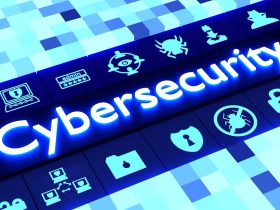Endpoint detection and response (EDR) tools are critical for telecom companies to protect their networks and devices from cyber threats. Given the unique challenges faced by telcos, specialized EDR tools with specific features are essential to ensure robust security and operational efficiency. This article outlines the three key features telcos need from specialized EDR tools.
Understanding EDR Tools
EDR tools are designed to detect, investigate, and respond to cyber threats on endpoints such as computers, mobile devices, and servers. These tools provide real-time visibility into endpoint activities and enable rapid response to security incidents.
Key Functions of EDR Tools:
- Threat Detection: Identifying potential threats and suspicious activities on endpoints.
- Incident Response: Providing tools and capabilities to investigate and respond to security incidents.
- Visibility: Offering comprehensive visibility into endpoint activities and security events.
Key Features Needed by Telcos
Telcos operate in a complex and dynamic environment, requiring specialized EDR tools with features tailored to their specific needs.
Scalability and Performance
Telcos manage vast networks with millions of endpoints, necessitating EDR tools that can scale to handle large volumes of data and deliver high performance.
Scalability Requirements:
- High Data Throughput: EDR tools must handle high data throughput to process and analyze large volumes of endpoint data in real-time.
- Distributed Architecture: A distributed architecture ensures that EDR tools can scale horizontally, supporting the addition of new endpoints without performance degradation.
- Cloud Integration: Integration with cloud platforms allows EDR tools to leverage cloud resources for scalable data processing and storage.
Advanced Threat Detection Capabilities
Telcos face sophisticated cyber threats that require advanced detection capabilities to identify and mitigate effectively.
Detection Features:
- Behavioral Analysis: Using machine learning and behavioral analysis to detect anomalies and suspicious activities that may indicate cyber threats.
- Threat Intelligence Integration: Integrating threat intelligence feeds to stay updated on the latest threats and enhance detection accuracy.
- Automated Response: Automating the response to common threats to reduce the time to mitigation and minimize the impact of security incidents.
Comprehensive Visibility and Control
Comprehensive visibility into endpoint activities and control over endpoint configurations are essential for telcos to maintain robust security.
Visibility and Control Features:
- Real-Time Monitoring: Real-time monitoring of endpoint activities to detect and respond to threats promptly.
- Centralized Management: A centralized management console that provides a unified view of all endpoints and security events, simplifying administration and control.
- Endpoint Configuration Management: Tools to enforce security policies and configurations across all endpoints, ensuring compliance with security standards.
Benefits of Specialized EDR Tools for Telcos
Specialized EDR tools with these key features offer several benefits for telcos, enhancing their security posture and operational efficiency.
Key Benefits:
- Improved Threat Detection: Advanced detection capabilities enable telcos to identify and mitigate sophisticated threats more effectively.
- Enhanced Scalability: Scalable EDR tools can handle the large volumes of data generated by telco networks, ensuring consistent performance.
- Centralized Visibility: Comprehensive visibility into endpoint activities allows telcos to maintain control over their networks and respond to threats promptly.
- Operational Efficiency: Automated response and centralized management reduce the administrative burden on security teams, improving operational efficiency.
Conclusion
Telcos require specialized EDR tools with scalability, advanced threat detection capabilities, and comprehensive visibility and control to protect their networks and devices from cyber threats. By leveraging these specialized tools, telcos can enhance their security posture, improve threat detection and response, and ensure the smooth operation of their networks. As cyber threats continue to evolve, investing in robust EDR solutions will be critical for telcos to maintain their security and resilience.
Source of the news: SC Magazine














Got a Questions?
Find us on Socials or Contact us and we’ll get back to you as soon as possible.